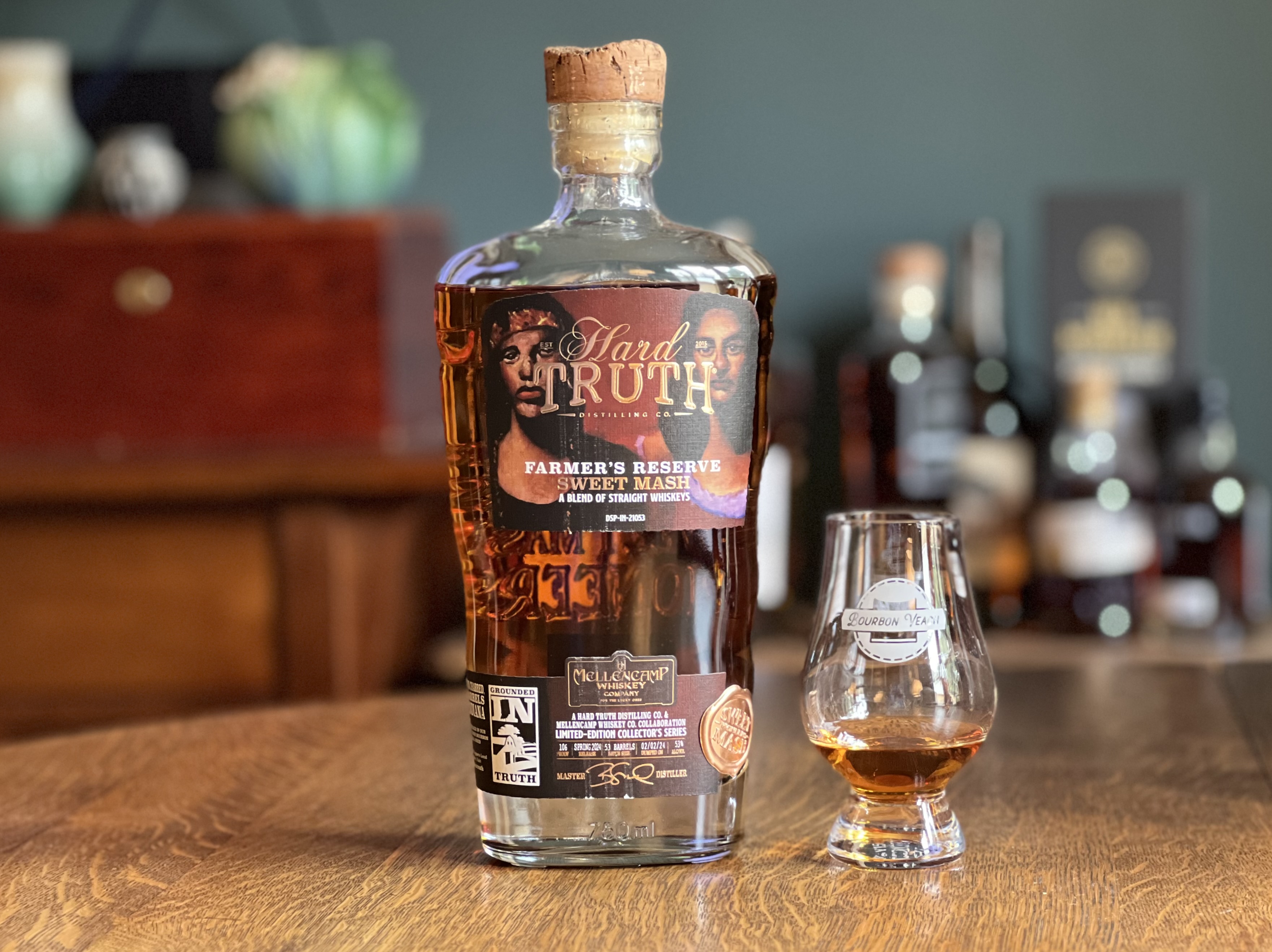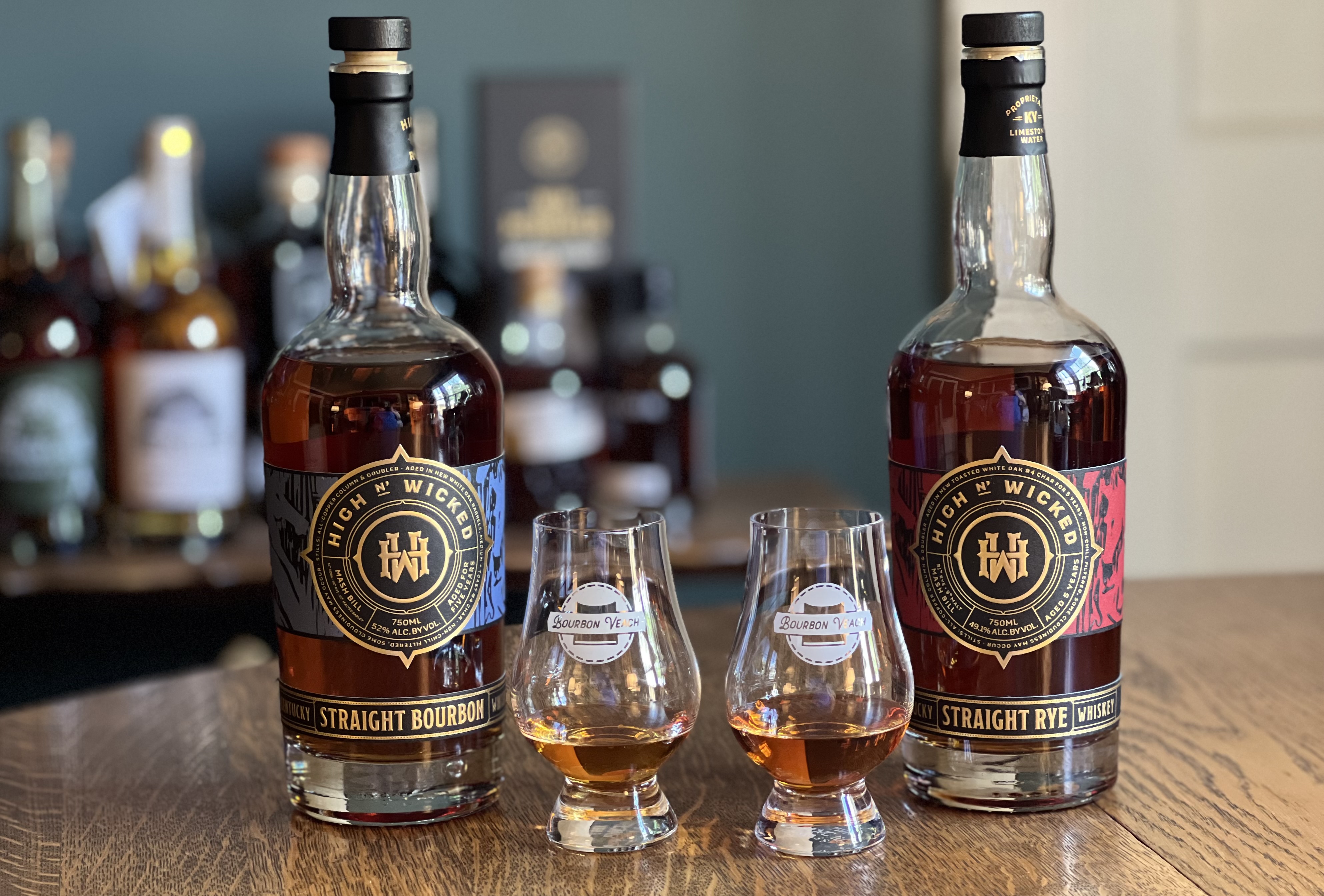A mash bill is the recipe of the amount of grains used to make a beer for whiskey production. In Scotland it ranges from 100% barley malt for single malt whiskey to corn, wheat and malt for grain whiskey. In the United States there are rye whiskeys made with at least 51% rye and Bourbon whiskeys made with at least 51% corn. The other 49% of the grains to make rye or Bourbon can be any grain the distiller wants to use to make beer.
Historically, in Kentucky, the grains used in the mash bill are corn, rye and barley malt. The Filson Historical Society has several recipes or mash bills from the late 18th and early 19th centuries in their collections. Some of them state that wheat can be substituted for rye in the recipe, but it is interesting that they all have only three grains in the mash bill. They don’t discuss the type of corn because in those days there were limited types of corn being grown – usually yellow or white corns, but sometimes red or multicolored corn was being grown by a farmer. The recipes don’t designate a particular type because the type used is what the farmer distiller grew or what the neighbor who was paying to have his corn distilled, grew.
As the 19th century progressed, distilleries grew in size and moved from being a cottage industry run by the farmer who grew the grain, to independent businesses in their own right. This meant that the distiller had to purchase grain to make their beer. Once again, the type of grain is hardly ever mentioned. The only distiller that I have found that mentions the grain is E.H. Taylor, Jr. He states that he used only white corn at his O.F.C. Distillery in the 1870s. Taylor also mentioned that he purchased his barley malt from a local beer brewer and that he used “two and a half times as much malt as other distillers because I think it adds a nutty sweetness to the whiskey”. He was purchasing the rye from grain merchants based out of Chicago.
Rye whiskey distillers in Kentucky were using several different mash bills as well. Some were using rye and barley malt alone to make their beer in a style similar to Pennsylvania rye whiskey. Some were using rye, corn and barley malt because corn was cheaper than rye and added a sweetness to the whiskey, more like a Maryland style rye. At Old Pogue, they were making a beer from 100% rye malt. Each of these mash bills gave the distiller a different style of flavor.
Prohibition changed many things in the distilling industry. For the first time, whiskey standards were formalized and written down into government regulations. For example, the first regulation for barrel entry proof was enacted at this time. Before Prohibition, many customers were purchasing their whiskey directly from the barrel, so most distillers had a barrel entry proof between 90 and 105 proof. The regulations set that highest barrel entry proof at 110. The regulations formalized the 51% rye for rye whiskey mash bills and 51% corn for Bourbon mashbills.
The distillers were starting back into business during the greatest economic depression they had ever known, so the grain they used was the most cost effective variety they could get – yellow corn that was being grown in the corn-belt and rye from the northern states and Canada. The barley malt was brought in from Wisconsin and other beer producing states. The Depression and then the World War kept conditions that caused distillers to continue to use the same styles of grain for economic reasons as much as for the flavor they provided. By the 1950s, hybrid grains were being grown that increased the yield in the field but also changed the overall flavor in the grains provided for whiskeys.
The 1970s saw a growing decline in whiskey sales world-wide. In 1984, the industry managed to get many changes in government regulations that allowed distillers to make whiskey in a more economical manner. One of the changes was the use of manufactured enzymes to convert grain starch into sugar. This allowed for the reduction of the amount of malt used to make the distiller’s beer and saved the distiller a lot of money since malt is the most expensive grain in the mash bill. The enzymes do not contribute flavor to the beer like barley malt does, so the flavor profile of the finished whiskey once again changed.
In the 21st century, there has been a growth of small, artisan distillers who wish to make a product with different flavors that will give consumers a reason to purchase their whiskey instead of the established brands. These distillers are often using a creative mash bill to provide these flavors. Many are using unusual grains such as oats or buckwheat in their mash bills. Others are using more than three grains. Many are using heirloom varieties of grains such as white, red or blue corns to provide different flavors. Others are using beer malts, which provide different flavors such as chocolate or caramel malts, but often at the cost of alcohol production in the beer. Others have removed malt from their mash bill completely and are using enzymes alone for their conversion of starch to sugar.
The mash bill has changed quite a bit over the last two centuries. The new artisan distilleries are doing things to their mash bill that can reflect back to their farmer distiller ancestors, but can also be considered completely new and innovative. These are exciting times in the distilling industry and the mash bill is in the center of it all.

Photos Courtesy of Rosemary Miller














15 Pingback